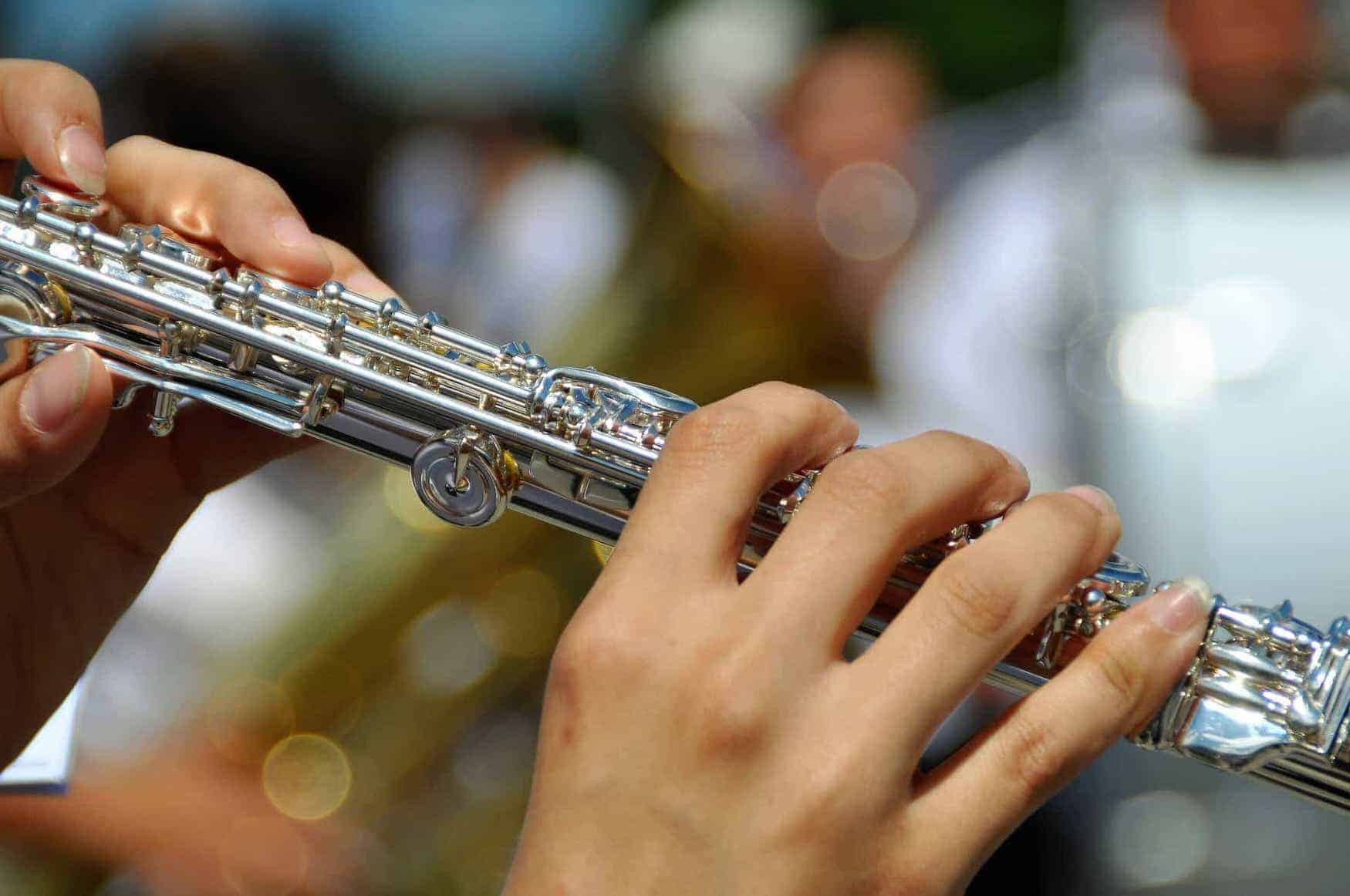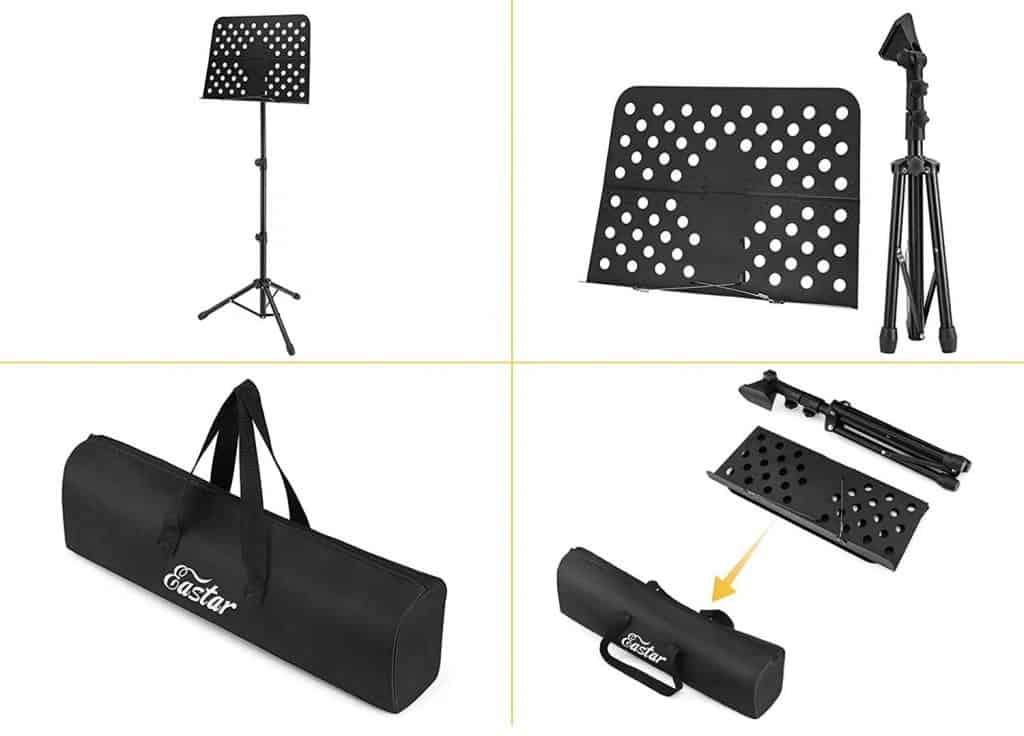Ever thought about playing the flute and creating lovely melodies that float through the air like a gentle breeze?
Learning to play the flute is about handling the instrument and bringing your unique sound to life. From mastering finger positions to refining your tone, the secrets to playing the flute await you.
In this article, we will provide the essential tips, from choosing the right flute to creating your first sweet note.
Get ready to unlock the joy of playing the flute and make music that resonates. Keep reading to learn all the important stuff!
Warm-up your body
Always warm up your body before you start to practice. The flute is not the most comfortable instrument to play so do a few simple shoulder and neck stretches before you play and your body will thank you for it! And remember to warm up your lips too!
Decide a target for each practice session
Here are some tips to structure your flute practice and improve your playing:
- Choose a focus for each practice session, like dynamics, tuning, or phrasing.
- A well-planned practice routine guides you and helps you use time wisely.
- Turn off your phone or put it on “Do Not Disturb” to avoid distractions.
- Get comfortable with water or tea before you start.
- Set a goal for each practice, like working on your embouchure or playing in every register.
- Break your practice into smaller goals to feel more accomplished.
- Allocate more time to things that need more work, like scales.
- Record yourself to check your technique and track your progress.
Out of every one of these tips on learning Flute, this particular one is the element that can certainly produce a huge difference rapidly.
Record yourself and listen back
Film your flute playing. This can be brutal but is definitely worth it to watch back your daily practice and analyse your performance. The sort of things to look out for are:
- Can you play in tune?
- Is your air stream measured?
- Are you making a good sound and tone?
- Is your lip (embouchure) good enough?
- Is your intonation (pitch) good enough?
- Does your vibrato sound appropriate to the music?
- Is your posture OK?
- Is your lip plate OK?
- Are you able to play equally well in each register of the instrument?
Flute players all over the world use the technique, and these are all flute tips and questions that need to be looked at. If you keep a check on these technical aspects on a regular basis, you’ll see a vast improvement in your flute playing fairly rapidly. It is important to avoid committing bad habits to muscle memory.
Warmup
Try starting or ending your practice with some breathing warm-ups – with or without your flute. Not only will this improve your breath control but it is also very relaxing, think of it the same way as meditation or mindfulness! Make sure your air flow is steady, that your lips are warmed up, that you’re sitting or standing in the correct position, and that you’re totally focused.
Mia Olson
Mia Olson is a private tutor and professor at Berklee College of Music.
Email: [email protected]
Gender: Female
Job Title: Professor
Mia Olson
Don’t be afraid to put lots of air into the instrument. Breath is life, so when you breathe into your instrument you make your music come to life! Let the instrument vibrate with sounds through your focused breathing.
Exercises
It’s important to remember that you can do finger exercises without your instrument! Try lifting one finger at a time whilst resting your hand on a desk to improve finger dexterity. Useful if you’re bored in a meeting or during a maths lesson!
Play-Along
Play along with a recording to practice orchestral excerpts. It’s much more fun than playing alone! It’ll also help you learn to keep in tune (intonation), develop a nicer tone, and most importantly, to listen better.
Get A Great Music Stand
You need a music stand at home. It’s important. No negotiation needed!
Getting a music stand is an easy thing to do, that’ll pay dividends down the line. Out of every little thing outlined in this article, this is undoubtedly the simplest tip to achieve!
A good music stand means you can forget about terrible posture when playing and trying to balance sheet music on your knee. It means you can have your music in the best position, and you’re able to spread out multiple sheets so that you don’t have difficult page turns and a good music stand is something you can actually easily take to a lesson, music band practice, or even performance.
Playing a musical instrument is difficult at the very best of times, why then make it tougher by battling a cheap music stand that is always dropping down!
Getting a collapsible stand is ok – especially in terms of having one for when you have to bring your own personal stand to a gig, recording session, or music lesson. In this instance, we suggest this collapsible stand. But for 90% of your time playing, you are doing so at home. And this is where we do not advise having a collapsible stand.
Foldable stands tend to slide down. They have a tendency to break easily. They have a tendency to fall over with a heavy book. So generally, they’re not too dependable. This is why for your own home, we highly recommend this particular stable, long-lasting, non-collapsible music stand…
It may be a little more costly initially to buy a foldable AND a non-flip-style – but you’ll save money in the end. Believe me when I say, the continual up and down of the collapsible stands really does make them break easily – so when you can minimize the amount you do it (by using your non-collapsible at home), then you’ll become the very proud owner of two music stands that’ll endure for years!
We advise this type of music stand. It is reliable, has great reviews, and I have one myself and think it’s great!
Having The Right Teacher Is Important
This flute tip is the most vital: An excellent teacher is the most precious thing in the world. They will identify your weaknesses however, most importantly, reveal to you tips on how to improve them. They are going to direct you to the best method book for your own style of learning. So if you can pay for it, get private lessons.
But how can you tell when you’ve got a good teacher? There are so many available!
Look for basic factors:
- Do you really understand them when they are teaching you tricky techniques?
- Are you making decent improvements with them?
- Do they invigorate you?
- Do they present you with simple tips which make the world of difference to your playing?
For those who answered yes to the majority or all of these questions, then you’ve discovered a fantastic tutor who works for you.
However, are you still in search of that elusive person? Where do you go to find someone who could help you play your instrument?
My first ‘port of call’ would be to find personal referrals from your local area. Perform some research on Facebook and Linkedin to see who your local teachers are, and what type of support they have from their pupils.
Great teachers will usually have recommendations splurting out of the mouths of their pupils all over the place! Many of them have a Facebook group. And they can frequently have a waiting list. All these things are a good sign that the teacher is worthwhile and in demand.
Should this be the situation, get on that waiting list, and ask for a trial lesson.
Whatever happens, don’t freak out, or stress. Nothing is forever, so in case you find a teacher and it doesn’t work out, simply start to look for another teacher! You can never be 100% sure in regards to a connection between two individuals, so just go for it!
Always Learn Something Totally New
Learning a musical instrument like the Flute is a lot like going exploring. It only truly seems like it’s been worth it when you find a new challenge and start playing something new.
However, to find a new challenge you will need to look in new places, focus on a new challenge and speak to new people.
The best way to make this happen is simply by engaging with the Flute community via a regular magazine, speak with another student, look at an online forum or a YouTube channel. Our Ted’s List Facebook VIP Group has a lot of musicians that help and support each other; so come and join that.
A magazine, for instance, will have new columns and tips for you to read every month and many of the writers give out small weekly lessons complete with brand new exercises to try and help you improve.
Online discussion boards will have discussions between different players on a variety of subjects. Watch out though. These can get pretty heated sometimes!
And a decent YouTube channel will publish new video tutorials each week for you to go through. If you haven’t done it yet, take a look at Ted’s List YouTube channel, where we now have 100’s of videos on all musical instruments.
Understanding a new challenge will broaden your horizons while keeping you enthusiastic to further improve.
You could even try mastering some of the flute SFX in this video:

Learn Music That You Love
This is a straightforward tip, but also one of the more useful. To put it simply, playing Flute will be ten times more fun if you’re learning the music that encouraged you to buy the Flute, in the first place.
This isn’t something that’s just aimed at beginner students either.
Many professionals – jazz musicians especially – will devote a huge part of their practice time to learning music that motivates them. This is especially helpful advice for beginners – even in the classical world.
Not only does this improve each musician’s repertoire but it also helps to keep them encouraged and makes such that the enjoyment of participating in music is never lost.
If all that you do is play countless scales and arpeggios during your practice sessions then it can feel a little bit soulless and you’ll possibly feel that you’re not getting anywhere.
Having said that, many students find that if you can grab the flute right after a hard day at school or work and chill out for the evening by playing through your favourite music, then you’ll associate playing the flute with fun and pleasure.
And this sensation will always help keep you coming back to the Flute for more.
Bart Feller from the Juilliard School says, “While the sound of the flute is wonderful, it’s even better if the flute can try to capture sounds like the human voice, or a cello, or a trumpet. Use your magical imagination to expand your palette of colours and you don’t always have to have the flute sound like a flute. That’s too limiting.”
How to play the flute - top 10 tips
Summary
I hope you’ve enjoyed my top 10 tips on how to play the flute. Remember to comment below, and if you feel this has helped you and given you some valuable ideas, it may do the same for other people – so feel free to share the article around!
Good luck on your journey to flute greatness!
Do you want to share this infographic on your site? Use this code...
FAQ's
You can get better at playing the flute by practicing. I know this is the common-sense answer – but it’s common sense for a reason! That doesn’t mean spend 2 hours a day playing. 20 minutes of focused practice is far more important than an hour of practice thinking about what you’re having for dinner! The next obvious suggestion is to focus on your lip. Students struggle with embouchure all the time, so make it a focus of your playing.
The easiest flute to play is a Yamaha YFL-222. It’s lightweight (so your arms won’t ache so much!) and designed for beginner students. It’s also very reasonably priced…
The easiest way to play high notes on the flute is to squeeze as hard as you can. Only joking! It’s all about having the correct embouchure. As a student, if you need help on improving your embouchure, look at the Ted’s List dedicated Beginners Guide To Playing Flute.
All students should be playing as much flute as possible. How many hours you practice depends on your personal situation. What I can confidently state though, is that you should be practicing whilst totally concentrated and focused. If you find your mind wandering, then you need to take a break!













I’ve been teaching music for over 30 years, and it’s fascinating to see how methods evolve. This article hits some key points, especially on having the right teacher and always learning something new. Curious to know, how do you all integrate modern technologies or apps into your practice sessions? I’m always looking to innovate my teaching methods.
Just started learning the flute and found the tip about recording oneself super helpful! It’s kinda awkward to hear myself play at first, but it really makes a difference in noticing the areas I need to work on. Totally agree with the part about having a great music stand, makes practicing so much easier. Thanks for the awesome tips!
Absolutely! Recording yourself is a game changer. Did that when I first started on the sax and it sped up my progress like crazy. Good luck with your flute journey!
I can play the Flute now, Thank you!
Great Lily. Keep going…